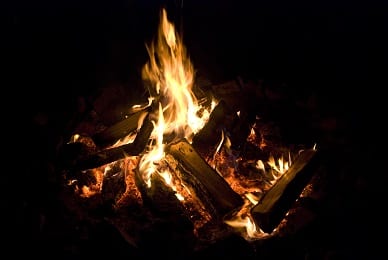Camping safety – what you need to pack
On average each year, Brisbane’s Royal Children’s Hospital treats 40 children for burns from outdoor fires, and all but a handful of these injuries were caused by glowing coals rather than flames. A campfire covered by dirt or sand, or left to burn out, is hot enough to cause severe burns in less than a second, even several hours later. The annual number of these burns victims is increasing with a peak over Easter.
Sadly more than half of these children are under five, and more than 80 percent are under nine. Contrary to popular belief, dirt or sand will not extinguish a campfire. The coals will remain hot enough to cause horrendous burns for many hours and sometimes days.
One of the most important items to take with you camping is water. Take a couple of large containers and, if not near beach or a dam, use the bottled water to extinguish the campfire.
First aid for burns is 20 minutes under cool running water. So you can use this bottled water while either driving to running water or waiting for emergency services. Cool running water will work up to 3 hours after the initial burn.
Commonly children will get bites and stings, grazes, sore eyes, sprains and vomit but your camping first aid kit must be prepared for more serious injuries like snake bite (heavy bandages) and scalds from the billy (water).
In any first aid kit there will be a range of items that are choking hazards and/or sharp and unsuitable for children to access. So keep your first aid kit away from little children.
Camping safety phone numbers
Every camper should do first aid course and learn CPR by practicing CPR on a baby, toddler and adult mannequin. Put emergency numbers into your phone: emergency services 000, Poisons Information centre 13 11 26 and 13 HEALTH (13 43 25 84).
If you are regular campers and off-roaders you will know it is safer and more fun in a group. Before you head off check area for phone coverage should you need to call for help and if camping alone tell someone reliable where you are going.
So remember, if you are camping add cling wrap and large bottles of water to your usual first aid kit.
Susan Teerds is the CEO of Kidsafe Queensland Inc


Great tips in this one, especially regarding putting out fires correctly. I can’t believe people cover open fires with sand 🙁